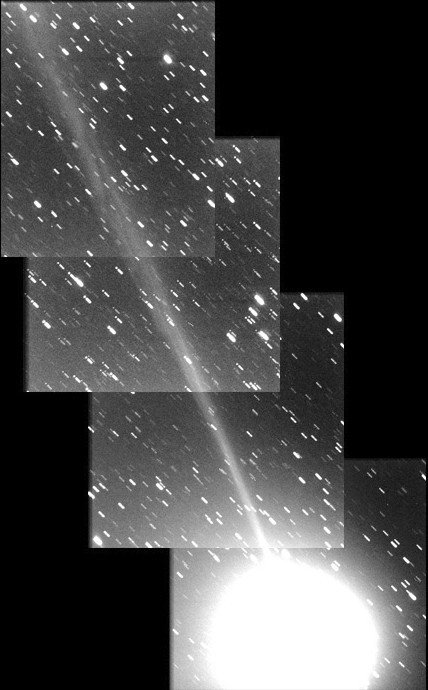Image of the Month - December 2002
Comet 153P/2002 C1 (Ikeya-Zhang)
Easily the brightest comet of 2002, and argueably the best comet since C/1995 O1 (Hale-Bopp)
graced our skies in 1997 was discovered on February 1, 2002, by veteran comet hunter Kaoru Ikeya in
Japan, and Daqing Zhang in China. An independent discovery was reported from Paulo M. Raymundo in Brazil. The comet was found to have an orbital period of roughly
three and a half centuries, and it is believed to be identical with comet C/1661 C1, described by the Polish
astronomer Johannes Hevelius.

Credit & Copyright: Felix Hormuth, Starkenburg Observatory, Heppenheim, Germany
This composite image of 153P/2002 C1 (Ikeya-Zhang), consisting of four overlapping frames, was made on May 16, 2002,
by Felix Hormuth with a Apogee AP7 CCD at the 0.45m f/4.4 Newtonian reflector of the Starkenburg
Observatory, Germany. Each of the four frames is in itself a composite of five 60 second exposures which were stacked with Astrometrica
to compensate for the comets motion of 4.4"/minute. Slightly less than 1° of the comet's narow ion tail is captured
in this view. (Click on the image to see the full resolution image.)
Related Links:
153P/2002 C1 (Ikeya-Zhang) Orbit Animation (JPL)
Comet Ikeya-Zhang, a new visitor by Tumbling Stone
Gary W. Kronk's Cometrography
Image of the Month
Previous | Archive | Next
[ Home |
Downloads |
Version History |
Star Catalogs |
Registration |
Mailing List |
About the Author |
Minor Planets |
Monthly Image |
Papers |
Links ]
